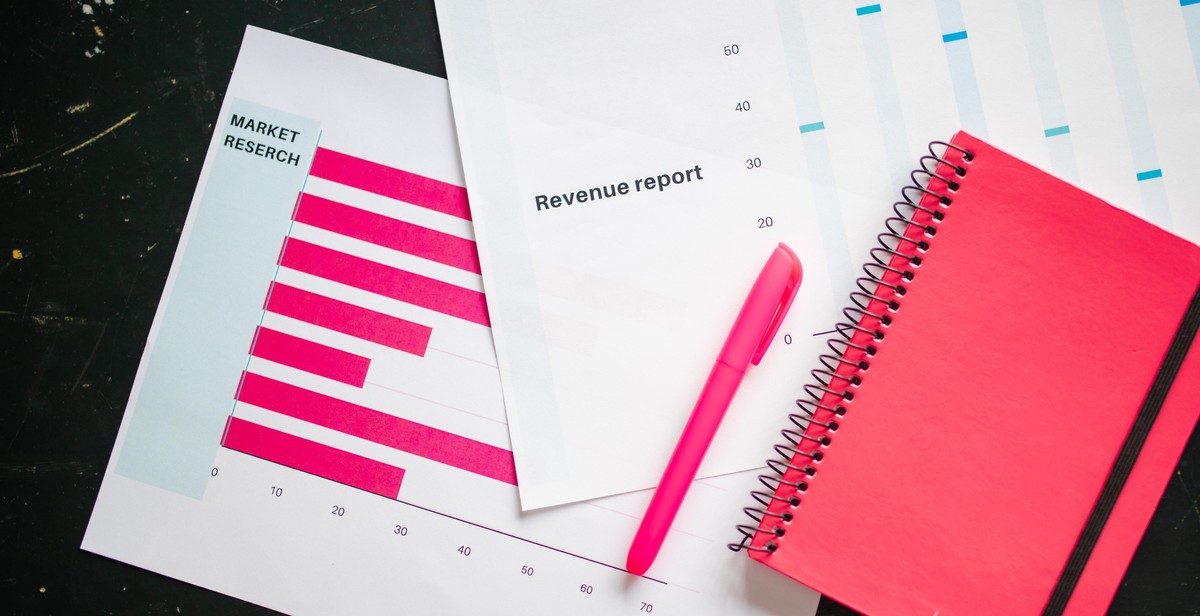Introduction
Market research is a crucial step in the process of launching a new product. It involves gathering data and insights about your target audience, competitors, and industry trends. By conducting market research, you can identify potential opportunities and challenges, develop a better understanding of your customers’ needs and preferences, and make informed decisions about your product development and marketing strategies.
In this article, we will explore the process of conducting market research for a new product, with a focus on gathering consumer insights. We will cover the different types of market research methods, the importance of defining your target audience, and how to analyze and interpret the data you collect.
What is Market Research?
Market research is the process of gathering and analyzing information about a specific market or industry. The objective of market research is to gain a better understanding of consumer behavior, preferences, and needs, as well as the competitive landscape and industry trends.
Market research can be conducted through a variety of methods, including surveys, focus groups, interviews, and observation. The data collected through market research can be used to inform product development, marketing strategies, and business decisions.

Why is Market Research Important?
Market research is a crucial step in the process of introducing a new product to the market. It involves gathering and analyzing data about the target audience, competitors, and industry trends to make informed decisions about the product launch. Here are some reasons why market research is important:
Identifying Opportunities
Market research helps businesses identify new opportunities in the market. By understanding the needs and preferences of the target audience, businesses can create products that meet those needs and stand out from the competition. This can lead to increased sales and revenue.
Understanding Consumer Needs
Market research helps businesses understand the needs and preferences of their target audience. By gathering data on consumer behavior, businesses can create products that meet those needs and provide a better user experience. This can lead to increased customer satisfaction and loyalty.
Reducing Risks
Market research can help businesses reduce risks associated with introducing a new product to the market. By analyzing data on the competition, industry trends, and consumer behavior, businesses can make informed decisions about product development, pricing, and marketing strategies.
Staying Ahead of Competitors
Market research helps businesses stay ahead of their competitors by providing insights into industry trends and consumer behavior. By staying up-to-date on the latest trends and preferences, businesses can create products that meet the changing needs of their target audience and stay ahead of the competition.
Steps to Conduct Market Research
Market research is a crucial step in launching a new product. It helps you understand your target audience, identify trends, and make informed decisions. Here are the steps to conduct market research:
1. Define Your Objectives
Before conducting any research, it’s essential to define your objectives. What do you want to achieve with your research? Do you want to understand your target audience better? Do you want to identify trends in the market? Defining your objectives will help you focus your research and get the most out of it.
2. Determine Your Target Audience
Once you’ve defined your objectives, it’s time to determine your target audience. Who are you trying to reach with your product? What are their demographics, interests, and behaviors? Understanding your target audience will help you tailor your research to their needs and preferences.
3. Choose Your Research Methodology
There are several research methodologies to choose from, including surveys, focus groups, and interviews. Each method has its strengths and weaknesses, and the one you choose will depend on your objectives and target audience.
4. Collect Data
Once you’ve chosen your research methodology, it’s time to collect data. This can be done through online surveys, phone interviews, or in-person focus groups. It’s important to ensure that your data collection methods are unbiased and that you’re collecting data from a representative sample of your target audience.
5. Analyze Data
Once you’ve collected your data, it’s time to analyze it. This involves looking for trends, patterns, and insights that can help you make informed decisions about your product. Data analysis can be done through statistical analysis or qualitative analysis, depending on the type of data you’ve collected.
6. Draw Conclusions and Make Decisions
Based on your data analysis, you can draw conclusions about your target audience and the market. These conclusions will help you make informed decisions about your product, including pricing, packaging, and marketing strategies.
By following these steps, you can conduct effective market research that will help you launch a successful new product.
Types of Market Research
Market research is the process of gathering information about a particular market, including its customers and competitors. There are two main types of market research: primary research and secondary research.
Primary Research
Primary research involves gathering new data directly from the source, such as through surveys, interviews, or focus groups. This type of research is often more expensive and time-consuming than secondary research, but it can provide more detailed and accurate information.
Some common methods of primary research include:
- Surveys: Surveys can be conducted in person, over the phone, or online and can provide valuable insights into customer preferences, behaviors, and attitudes.
- Interviews: Interviews allow researchers to ask more in-depth questions and gather more detailed information from participants.
- Focus groups: Focus groups bring together a small group of people to discuss a particular topic or product and can provide insights into how customers perceive and use products.
Secondary Research
Secondary research involves gathering information that already exists, such as from government agencies, industry associations, or academic research. This type of research is often quicker and less expensive than primary research, but it may not be as specific or tailored to a particular product or market.
Some common sources of secondary research include:
- Industry reports: Industry reports provide information on market size, trends, and competition.
- Government data: Government data can provide information on demographics, economic trends, and consumer spending patterns.
- Competitor analysis: Competitor analysis involves gathering information on competitors, such as their products, pricing, and marketing strategies.
| Primary Research | Secondary Research | |
|---|---|---|
| Definition | Gathering new data directly from the source | Gathering information that already exists |
| Cost | More expensive and time-consuming | Less expensive and quicker |
| Accuracy | More accurate and detailed | May not be as specific or tailored |

Primary Research Methods
Primary research methods are techniques used to gather fresh data from the target audience. The four primary research methods commonly used in market research include surveys, focus groups, in-depth interviews, and observation.
Surveys
Surveys are the most popular primary research method used in market research. They involve asking a set of questions to a large sample size of the target audience. Surveys can be conducted through various channels such as online, mail, phone, or face-to-face interviews. They are cost-effective, quick, and provide quantitative data that can be analyzed to generate insights.
Focus Groups
Focus groups involve bringing together a small group of the target audience to discuss their opinions, attitudes, and behaviors related to the product. The group is usually moderated by a researcher who poses questions and guides the discussion. Focus groups provide qualitative data and are useful for exploring complex issues and understanding the reasoning behind consumer behavior.
In-Depth Interviews
In-depth interviews involve one-on-one conversations between the researcher and the target audience. The interviews are usually conducted face-to-face or over the phone and are more structured than focus groups. In-depth interviews provide detailed data and are useful for exploring sensitive or personal topics.
Observation
Observation involves directly observing the target audience in their natural environment. The researcher takes notes on the behavior, attitudes, and opinions of the audience without interfering. Observation provides qualitative data and is useful for understanding consumer behavior in real-life situations.
| Surveys | Focus Groups | In-Depth Interviews | Observation | |
|---|---|---|---|---|
| Sample Size | Large | Small | Individual | Small |
| Data Type | Quantitative | Qualitative | Qualitative | Qualitative |
| Cost | Low | High | High | High |
| Speed | Fast | Slow | Slow | Slow |
| Flexibility | High | Low | High | Low |

Secondary Research Methods
Secondary research methods involve using existing data and research to gather information about the market and target audience. These methods can be cost-effective and time-efficient, and can provide valuable insights into consumer behavior and trends. Here are some of the most common secondary research methods:
Online Research
The internet is a vast source of information, and online research can provide a wealth of data on consumer behavior and trends. Some useful sources for online research include:
- Industry reports and whitepapers
- News articles and press releases
- Social media platforms and forums
- Online surveys and polls
- E-commerce websites and customer reviews
Publications
Publications such as industry journals, magazines, and newspapers can provide valuable insights into market trends and consumer behavior. Some useful publications to consider include:
- Marketing and advertising publications
- Industry-specific publications
- Business and financial publications
- Consumer magazines and newspapers
Government Sources
Government sources can provide valuable data on consumer behavior and trends. Some useful sources to consider include:
- Census data
- Economic reports
- Market research reports
- Consumer protection agencies
Competitor Analysis
Competitor analysis involves researching and analyzing the strategies and tactics of competitors in the market. This can provide valuable insights into consumer behavior and preferences. Some useful sources for competitor analysis include:
- Competitor websites and social media accounts
- Industry reports and publications
- Customer reviews and feedback
- Market research reports
| Method | Advantages | Disadvantages |
|---|---|---|
| Online Research | Cost-effective, time-efficient, vast source of information | Quality and reliability of information may vary |
| Publications | Specialized and in-depth information, valuable insights into market trends | May be costly, may not be up-to-date |
| Government Sources | Reliable and objective data, free or low-cost | May be limited or outdated, may require expertise to interpret |
| Competitor Analysis | Insights into consumer behavior and preferences, identification of potential opportunities and threats | May be time-consuming, may not provide complete picture of the market |

Conclusion
Conducting market research is a crucial step in the product development process. It enables businesses to gather valuable insights into consumer behavior and preferences, which can be used to inform product design, marketing strategies, and overall business decisions.
Benefits of Market Research
- Identifying market opportunities: Market research helps businesses identify gaps in the market and unmet consumer needs. This information can be used to develop new products or improve existing ones.
- Reducing business risks: By conducting market research, businesses can minimize the risks associated with launching a new product. It allows them to test the market and validate the product’s potential before investing significant resources.
- Understanding consumer behavior: Market research provides businesses with insights into consumer behavior, preferences, and buying patterns. This information can be used to create products that meet consumer needs and preferences.
- Improving marketing strategies: Market research helps businesses understand how to reach and communicate with their target audience. It enables them to develop effective marketing campaigns that resonate with consumers.
Overall, market research is a critical component of the product development process. It provides businesses with valuable insights that can inform strategic decisions and improve the chances of success in the market.
| Interested in conducting market research for your business? |
|---|
| Contact us today to learn more about our market research services. |
